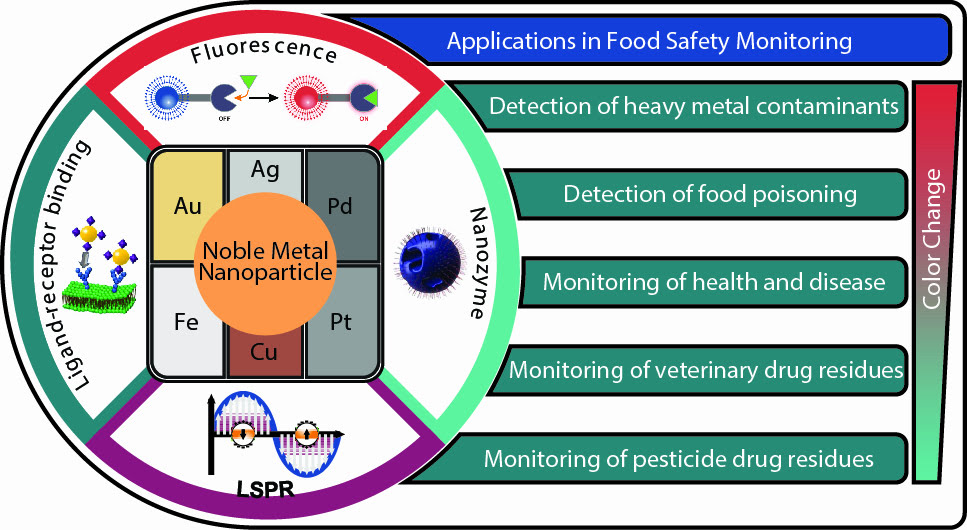Review of Noble Metal Nanoparticle-Based Colorimetric Sensors for Food Safety Monitoring
Linda Ardita Putri, Yuliyan Dwi Prabowo, Diva Meisya Maulina Dewi, Zuhra Mumtazah, Fayza Putri Adila, Ganjar Fadillah, Tahta Amrillah, Kuwat Triyana, Ferry Anggoro Ardy Nugroho, Hutomo Suryo Wasisto
ACS Applied Nano Materials 2024, in press

Food safety, particularly concerning foods contaminated by toxic chemicals, has emerged as a pervasive societal concern. The prevalence of food contaminants has spurred both scientific communities and industries to develop highly sensitive and selective sensors for rapid and precise food authentication. Noble metal nanoparticles (NPs) have garnered significant attention in this regard due to their exceptional properties, including high sensitivity, selectivity, stability, target binding affinity, and versatility for modification to detect specific contaminants. Moreover, the readout of such sensors is relatively straightforward, as their resulting color change can be observed with the naked eye. This Review aims to delve into the current strategies involving various noble metal NPs as colorimetric nanosensors in food safety monitoring applications. It begins by elucidating their working principles, encompassing localized surface plasmon resonance (LSPR), enzyme-based approaches, and other methodologies. Subsequently, the material properties of commonly utilized noble metal NPs, including those of gold, silver, palladium, platinum, and copper, are meticulously examined, providing comprehensive overviews of the benefits and drawbacks associated with each material. Furthermore, this Review summarizes the latest use cases of noble metal NPs in diverse food safety monitoring applications, ranging from the detection of heavy metal contaminants to veterinary and pesticide drug residues and foodborne pathogens. Lastly, it addresses the remaining challenges in this field and proposes feasible solutions, offering insights into future research directions.
